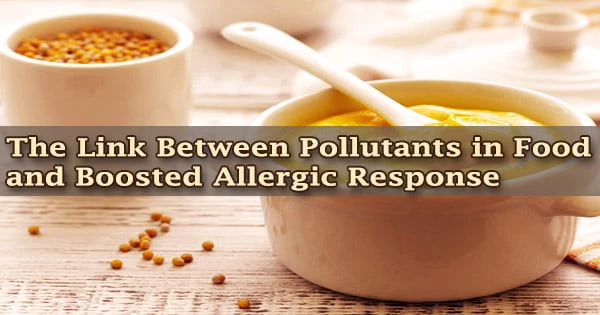Inadvertently swallowing modest levels of the heavy metal cadmium is known to irritate the stomach and lungs or induce renal illness, but a recent study relates another health risk to the pollutant: excessive activation of the antibodies that produce an allergic response.
Researchers linked this relationship in mice to gut bacteria that overproduced an enzyme that destroys vitamin D after being exposed to ingested cadmium, thus simulating vitamin D deprivation. In terms of clinical impacts, mice that were sensitized to a specific allergen and ate cadmium developed significant amounts of antibodies against the allergen as well as immune cells that exacerbated their respiratory symptoms.
The problem is, because cadmium doesn’t degrade easily it has a half-life in the body of at least 15 years if you are chronically exposed to low doses, it accumulates over time.
Prosper Boyaka
Separate epidemiological studies have found a link between vitamin D deficiency and increased susceptibility to asthma and other allergy symptoms in children. And, on Sept. 29, a Congressional study revealed an unexpected source of cadmium in children, revealing that unsafe quantities of harmful heavy metals, including cadmium, had been identified in numerous types of baby food.
“The problem is, because cadmium doesn’t degrade easily it has a half-life in the body of at least 15 years if you are chronically exposed to low doses, it accumulates over time,” said Prosper Boyaka, professor and chair of veterinary biosciences at The Ohio State University and senior author of the study. “It’s also not something we can easily avoid being exposed to because it can remain in air, soil and water.”
The natural element cadmium, a heavy metal used in batteries and pigments, is ingested by most humans via eating polluted plant and animal foods or drinking contaminated water. Cadmium is one of eight metals listed by the Environmental Protection Agency as being particularly hazardous at low quantities.
In mice that had consumed cadmium, Boyaka and colleagues discovered that an experimental drug that inhibited the activated enzymes lessened the allergic reaction.
“We proposed two possible strategies in the paper,” Boyaka said. “One is vitamin D supplementation, but that has to happen before cadmium exposure has caused a heightened allergic reaction, so the question would be when to use a supplement. We also propose targeting those enzymes as a way to prevent the heightened allergic response.”
The research was published recently in the journal Mucosal Immunology.
Environmental contaminants like cadmium and lead, as well as genetic predisposition and antibiotic misuse, are thought to have a role in the rising number of individuals with allergies, but the mechanics underlying that link aren’t fully known, according to Boyaka.
Researchers introduced a “subtoxic” dosage of cadmium to drinking water ingested by groups of mice for 28 days in this investigation. The researchers used a mouse model that mimicked human genetic propensity to egg allergy to assess the mice’s allergic reaction to an egg protein.
Mice exposed to the allergen after drinking water containing subtoxic concentrations of cadmium showed a higher allergic reaction in the form of internal inflammatory activities and allergy symptoms than control mice.
“Our hypothesis was that cadmium would change the microbe population in the gut because we know that dysbiosis, or a change in the microbiota, can drive allergic responses. And yes, giving those tiny, tiny doses of cadmium in the drinking water did change allergic sensitization,” Boyaka said.
The impact was known to occur in the gut, as predicted, since germ-free mice, who lack intestinal bacteria, did not over-produce the antibody that triggers an allergic reaction when given cadmium orally. The cadmium, however, was neither harming cells or making the intestines leaky, according to the researchers. Cadmium in the stomach has been related to the formation of inflammatory chemicals as well as the activation of two enzymes that break down vitamin D, according to a series of studies.
“That’s the main finding after exposure to subtoxic doses of heavy metals, the pollutants remain in soft tissue, including in the gut. And what they do is make cells more reactive. In the gut, specifically, bacteria will make certain cells produce more of the enzyme that degrades vitamin D,” Boyaka said. “That’s a connection that we did not know before.”
Boyaka’s lab is currently looking at other chemicals that may be utilized to stop the enzymes from degrading vitamin D.
The National Institutes of Health and the National Center for Advancing Translational Sciences provided funding for this research. The researchers used the Mass Spectrometry and Proteomics Core at the Ohio State Center for Clinical and Translational Science to conduct their investigations.
Eunsoo Kim, Astrid Bonnegarde-Bernard, Stephen Opiyo, Marisa Joldrichsen, Zayed Attia, Brian Ahmer, and Estelle Cormet-Boyaka are all co-authors from Ohio State.





